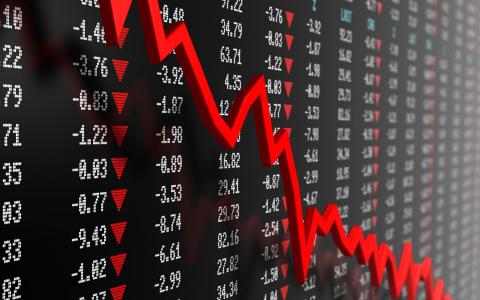
(Bloomberg) In 2011 and 2012, it was Europe’s credit crisis. Three years later, a currency devaluation in China twice sent the S&P 500 into corrections. Last Christmas, the bull market came within points of dying as the Federal Reserve raised interest rates.
Notice a pattern? Some pundits do, one in which every three years or so something drags the bull market to the brink of extinction, before a last-minute escape. Goofy numerology aside, it’s a record of resilience that underpins a case for optimism. And right around now is when the benefits start to be felt. The S&P 500 just rose for the ninth week in the past 10.
Never mind anemic profit growth, or the threat of a full-blown global trade war. Against the gloomy backdrop is a market whose gain is rivaling some of the best years in decades. Complacency? Perhaps. To bulls, it’s the market celebrating its survival from a trade-fomented growth attack, and in some ways, predicting a rebound ahead after the Fed has taken a U-turn to cut rates.
“The market turmoil and economic slowdown over the past 18 months is not marking the end of the business cycle, but rather represents a reset similar to crises that occurred every three years after 2008,” said Marko Kolanovic, a strategist at JPMorgan Chase & Co. “As the monetary stimulus acts with a lag, we believe that a cyclical upswing will more decisively manifest itself.”
As nerve-racking as these crises have been, so far they’ve provided support for the adage that what doesn’t kill the bull market makes it stronger. A couple down years and six corrections later, the advance stands as the longest in history as it heads to the end of its 11th year.
Theories exist as to why this cycle has been so long. Some credit the Fed, which has repeatedly stepped in to help restore market order. During the 2011-2012 European debt crisis, the central bank started two rounds of quantitative easing to spur growth. Three years later, equities sold off as it began to raise rates and it halted hikes for a year.
A similar dynamic played out in December 2018, when a fourth rate increase of the year sparked a near-death experience for the bull run. The Fed did an about-face midyear and equities are on track for one of the best annual gains in two decades.
“We have mediocre earnings growth. Yet the Fed cut three times this year,” said Michael Mullaney, director of global market research at Boston Partners, which oversees $87 billion. “As long as you have that kind of wind on your back, there is no reason that the economic backdrop can’t continue to be supportive for stock prices.”
Others attribute the market resilience to some mini-cycle slowdowns that ended up emboldening bulls. With U.S. gross domestic product stuck in the weakest recovery since World War II, it often feels like the world is on the edge of collapsing. But while growth has been slow, it’s been unusually steady. So much so that declines in corporate profits have been shallow.
What’s more, whatever ills that have hit the market have paled in comparison to the horrific experience in 2008.
Not everyone is convinced the market is out of the woods. At UBS Group AG, the firm’s model suggests the S&P 500’s expected rate of profit growth over the next 12 months is likely to turn negative in February, followed by deterioration in some leading indicators for manufacturing through the second quarter of 2020. Historically, such a pattern has been associated with market declines that ran at an annualized rate of more than 20%, warned Francois Trahan, a strategist at the bank.
For now, bulls remain in charge. Stocks rose this week as the Fed kept interest rates unchanged and President Donald Trump signed off on a phase-one trade deal with China. Up in all but two months this year, the S&P 500 has returned almost 30% including reinvested dividends.
Optimism has gathered pace in the past three months, with investors dumping defensive shares in favor of those that benefit from a pickup in the economy. Small-cap stocks have broken out of a one-year trading range while semiconductor shares defied a profit slump to lead the market. Financial companies this week saw their stocks eclipsing the 2007 peak for the first time, making a full recovery from the global financial crisis.
While periodic turmoil and recoveries have helped prolong the expansion, the unprecedented nature is sure to make investors nervous about an end to the cycle, according to Lauren Goodwin, an economist and multi-asset portfolio strategist at New York Life Investment Management.
“Even if you have mini cycles, you still have the macro cycle happening,” Goodwin said in an interview at Bloomberg’s New York headquarters. “It doesn’t mean it couldn’t last another couple of years but we’ve never seen it before. And so you see people taking both sides of the coin.”



